Hotel pricing and optimization strategies: A beginner's guide
Determining what price to sell your hotel rooms at is of strategic importance to every hotel business.
In economics, there is a proven direct relationship between pricing and the positioning of a company and its products, turnover, and market share.
Pricing also has a crucial operational role. It is a variable that needs to correspond to your hotel marketing, such as brand positioning, and your adaptation to the various market segments.
Since the development of high price variation practices, hotel pricing has evolved significantly. The goal is to best adapt the rooms offered to the market conditions and fluctuating demand. There should be a direct effect of pricing and pricing variations on your guests' purchase decisions.
A thorough understanding of demand is therefore essential to determine optimal price and relevant pricing variations, which are also effective in terms of their impact on demand.
Finding the optimal price
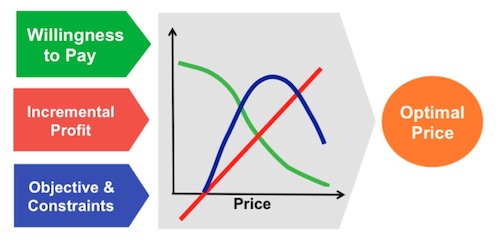
The analyses of demand, competition and costs represent the key elements of any hotel pricing policy.
The analysis of your costs is a starting point in determining the optimal selling price. The market, however, now plays an ever growing role as well. This is particularly true for those relating to the appreciation of demand.
Therefore, it is essential to know your guests' expectations and reactions on the room rates to enable the price variable to play its part successfully as an information signal.
The studies of acceptable price, value, and price sensitivity feed into the rationale for determining the optimal price, the pricing grid (the various prices for the same product or service), or the numerous selling prices.
See our post on How do hotels price their rooms? for a step-by-step guide in finding the optimal price for your hotel.
Hotel rate shopping as a business intelligence tool
Knowing what your competition is doing can significantly aid in finding the optimal price for your hotel rooms.
It is essential to monitor your competitors' prices, for two main reasons:
- Optimizing your own prices when there is an upward trend
- Modifying your pricing policy if the results are down
A common best practice in the hotel industry is to avoid price drops as much as possible and instead focus effort on reopening more inventory in the low-rate brackets.
There are various tools and methods for tracking prices. One way is to use our hotel rate shopping tool to track prices in your local area. The dashboard aggregates live local rates using publicly available information found on the Internet.
Other, more traditional methods include direct contact with the competition via a mystery shopper. Sometimes, even straightforward exchange of information with competitors may help. Keep in mind though, talking with competitors directly can lead to the risk of being accused of price collusion if such information exchange leads to price uniformity. It is thus preferable to ask a third party to collect the necessary marketing information as part of your competitive intelligence strategy.
Differential pricing
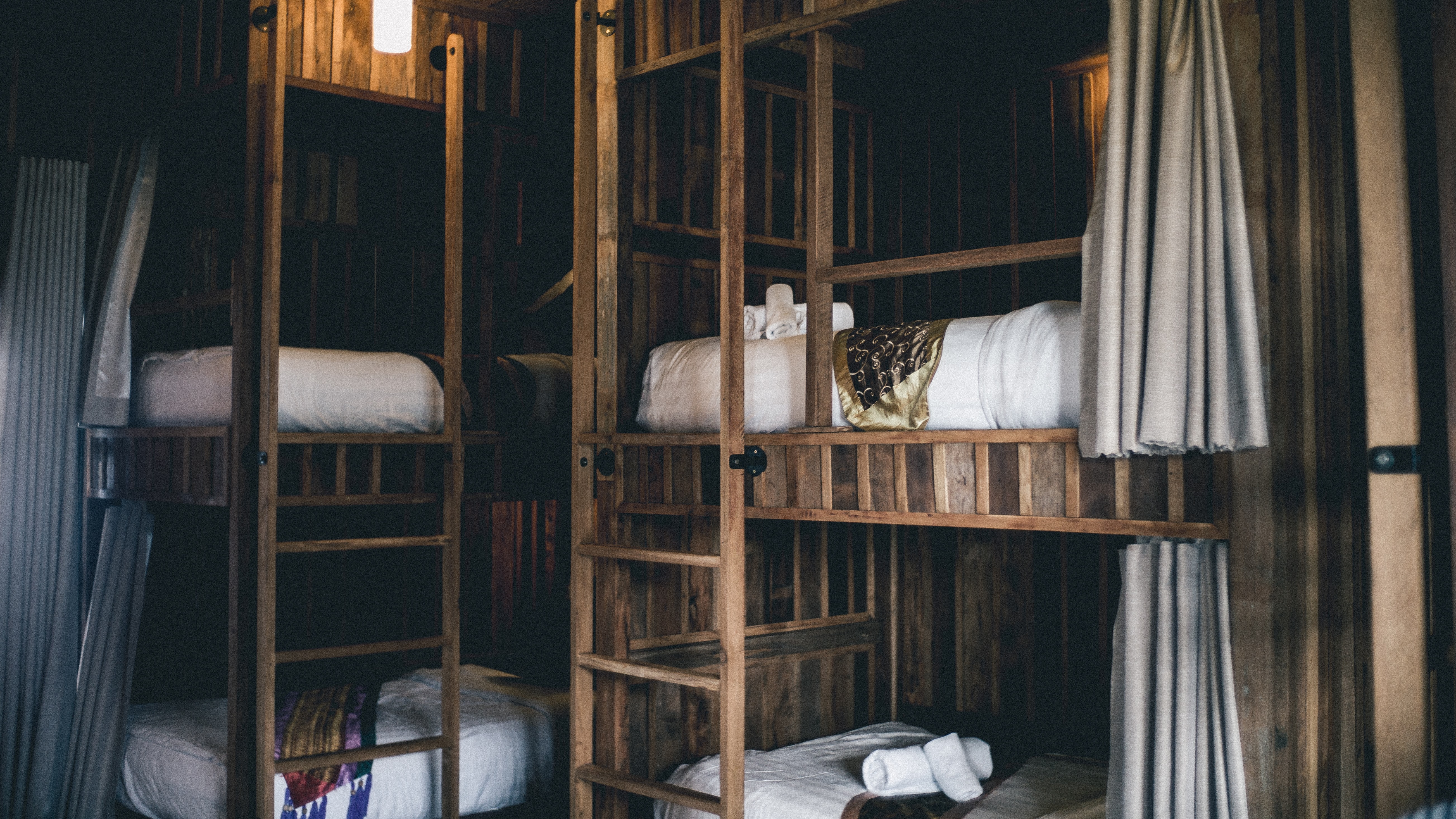
Demand is not homogeneous.
There are groups of guests with different price sensitivities and expectations regarding the rooms and facilities on offer. Therefore guests should be grouped into homogeneous market segments taking into account their price sensitivity and expectations. These groups can then be examined individually and prices set accordingly to each.
Differential prices require the following rules to be in place:
Price sensitivity. Price sensitivity is the degree to which the price of your hotel room affects the booking behaviour of your guests. To adhere to this rule, you need to set different prices for the different guest categories based on their purchasing power, to the best of your ability.
Guest segmentation. Every booking is related to one market segment, and it comes with it’s own price and services offered. In practice, this means that families arriving at your hotel should be booking the family packages (i.e. access to play area is included). And couples arriving at your property should be booking the packages designed for couples (i.e. champagne on arrival). Any opportunity for guests to jump segments in order to save should be avoided.
Price reactivity. Your hotel pricing should be flexible depending on the pricing trends in your local area, be it upward or downward. You should pay close attention to your competitors pricing, preferably with a hotel rate shopping tool, and adjust your prices on short notice accordingly.
Degressive pricing. You should make sure that every room rate offered is not too far from the rates immediately below or immediately above it. This is to allow for your guests to book the next rate above or below if their target rate becomes unavailable.
Adhering to these rules would ensure that guests who are willing to pay a certain price will never pay less.
Hotel pricing and optimization strategies
There are several tools at a hotel’s disposal when it comes to optimizing the room rates to achieve higher returns and optimize the hotel’s pricing strategy.
Quota restrictions
You can set different quotas for the different price points at your hotel. The quotas can be determined based on your own market analysis of consumer expectations. Your internal historical data can help here. Alternatively, you can obtain pricing and occupancy information for your area from the Hotel Price Reporter dashboard.
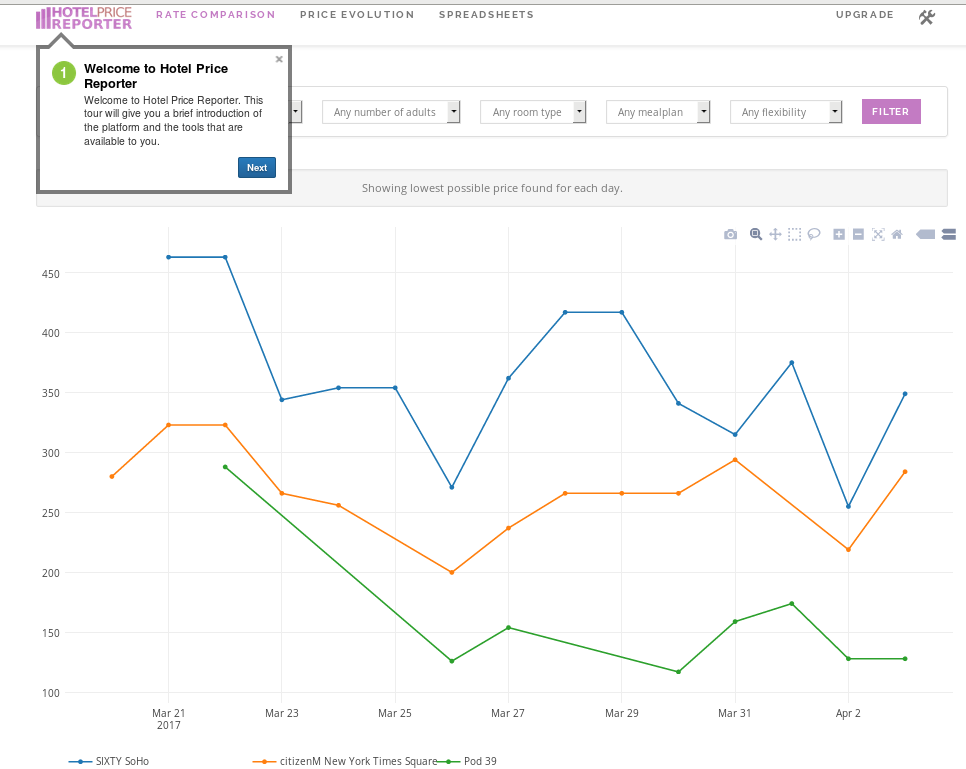
Quota restrictions contribute to the effort against revenue dilution. They represent arbitration between unsold rooms or rooms sold at prices which are too low. The idea is to always protect the highest prices by gradually raising the lowest price limit. You should keep raising the low price limit until either:
- a few high prices are left, or
- lower prices are reopened to stimulate demand.
Determining the number of rooms sold in each price bracket should be based on historical sales information. If such information is unavailable, you access price evolution data from the Hotel Price Reporter dashboard. You should also considering the calendar of events as well as any specific market characteristics in your area that you are aware of to fine-tune the quotas.
Hotel overbooking
Late room cancellations and no-shows are a common occurrence in the travel industry. But is there can we do something about it? Yes!
The solution is to anticipate the number of cancellations and no-shows and to overbook the same number of sales. The successful calculation of the overbooking rate needs to compensate the number of late cancellations and no-shows. This is where we can see a difference in the risk-taking strategies of yield managers.
If five rooms may be unsold at a specific date in a specific hotel, overbooking two or three clients is considered normal practice and without risk. Conversely, overbooking four, five or even six clients becomes more risky since the likelihood that one of the clients will show increases for each new client in overbooking.
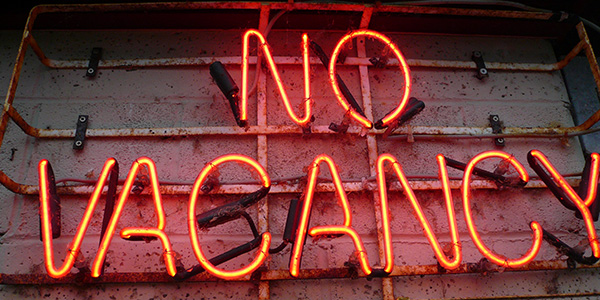
If we overbook, the likely five cancellations and no-shows, and in the end only four clients do not turn up, we are now confronted with a client who has duly booked his/her room and cannot be accepted.
This refusal, implies the book-out (the term used in the hotel industry) of the client which we are responsible for. The guest will be ‘relocated’ in another hotel, as close as possible, and likely under the same price and comfort conditions.
This refusal is not without costs. There are direct costs, linked to the relocation costs if the hotel room is more expensive - as the difference is, of course, not paid by the guest - or if there are taxi or restaurant charges. There are also indirect costs such as the guest dissatisfaction (i.e. reflected in a negative on-line review).
Practice has shown that refusing a guest brings a gap between the quality expected and the quality the company aims to achieve. Therefore, the customer frustration must be taken into account at all times. This is why some companies, in addition to paying for the direct costs, will offer monetary compensations in the form of gift vouchers, or coupons off their next stay, designed to address the customer dissatisfaction. You should take great care to avoid refusals with your best high-end guests and/or regular guests.
Determining the acceptable rate of overbooking
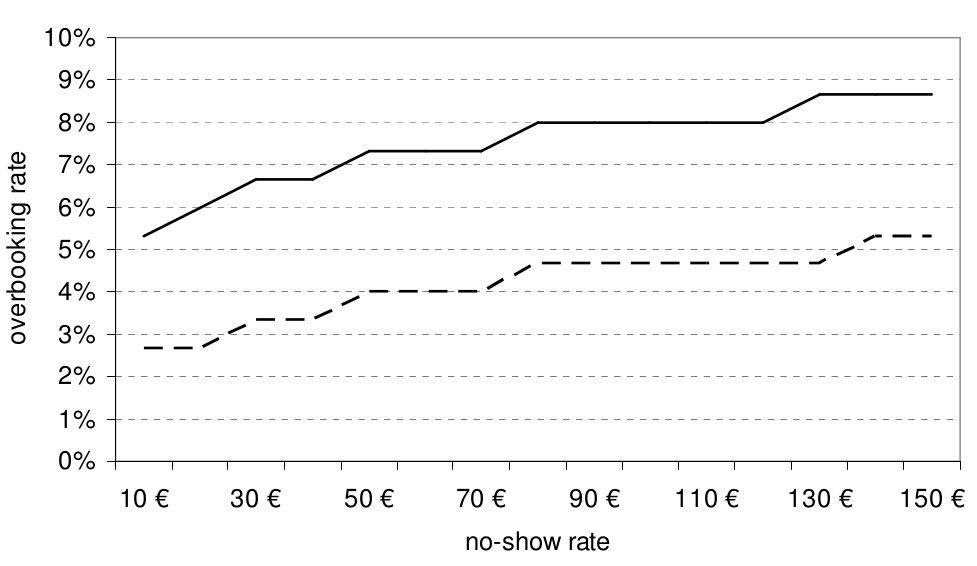
Because overbooking is a form of arbitration between unsold units and refusals, two factors are used to find the acceptable rate of overbooking:
- a sales volume analysis where the overbooking must compensate for the cancellations and no shows,
- the analysis of the marginal benefit brought about by the overbooking.
Overbooking is of value only if it contributes to revenue maximization. You should overbook only if the additional benefit brought about by the sale exceeds the cost generated by a likely refusal situation.
Overbooking alternatives
In addition to overbooking, there’s a few other ways to fight ‘empty’ rooms when service is being delivered.
One simple method consists in imposing constraints and/or penalties on the guests.
These could be in the form of a no-cancellation policy, or a reduced refund policy where the refund amount reduces the closer we get to the stay date.
Another method is to identify double bookings or watch for common signs with historically unreliable bookings.
Itinerary or length of stay management
Selling too many rooms in the middle of the week to guests who stay one night only freezes up the bookings for guests who wish to stay for two or three nights.
If the hotel receives business guests from Monday to Friday, any price optimization needs to cover four nights rather than just the one. Therefore, the guest who stays one night only should pay more for one night than the one who stays several nights.
One thing keep in mind is that freezing up all the hotel rooms one night in the middle of the week (even at high selling price) can lead to numerous refusals for longer stays.
Distribution
Distribution plays an important role in the context of greater price variation and hotels search for increased price attractiveness to consumers. Many hotels see it as an economic performance driver closely linked to price policy and revenue growth.
Selling every day, and at an optimal price, all the fixed capacity and related services is the key to profitability. The hotel’s objective are thus twofold when it comes to the distribution:
- Sales optimization and revenue growth through choosing networks which are adapted to the guests and are commercially efficient
- Distribution cost control

The cost of distribution
Several years ago the battle began to reduce distribution costs.
The battle was lead mostly by airline companies who fought to stop paying commissions to the traditional providers in the world of tourism such as travel agencies and Global Distribution Systems (GDS).
Today, direct sales via the Internet or via their call centres enable airlines to avoid paying high commissions to intermediaries. Direct sales, however also generate costs (e.g. human, financial, technical resources). Nevertheless, the benefits in nearly all instances outweigh the negatives of being able to sell direct.
Development of distribution network
The OTA & OTLA market share is increasing. Today, there are key players in distribution networks all over the world. The choice of the OTA you decide to work with, the cost and the control is important. The commission rate paid by hotels and other service providers often ranges (on average) from 15% to 20%, but it can be as high as 30%.
Moreover, hotels must respect carefully the parity rule in order to avoid conflict with their online distribution partners. Disparity rate is a dangerous game to play, but inventory disparity is accepted, for example, if a hotel wants to keep full control of the sales of a limited number of rooms or prestigious suites, it might prefer to sell those product itself (direct sales) instead of giving a full access to the inventory to all OTAs.
The issue of revenue management and distribution are closely linked. Differential pricing coupled with inventory management according to the determined price and associated with effective monitoring of distribution and its costs, contributes to greater economic effectiveness of hotel companies.